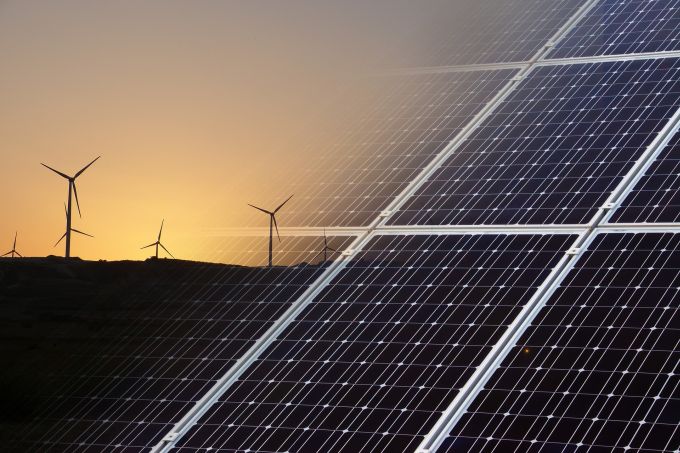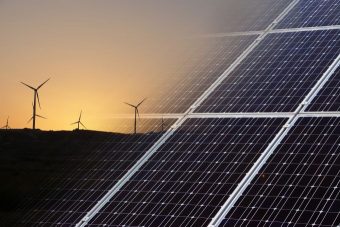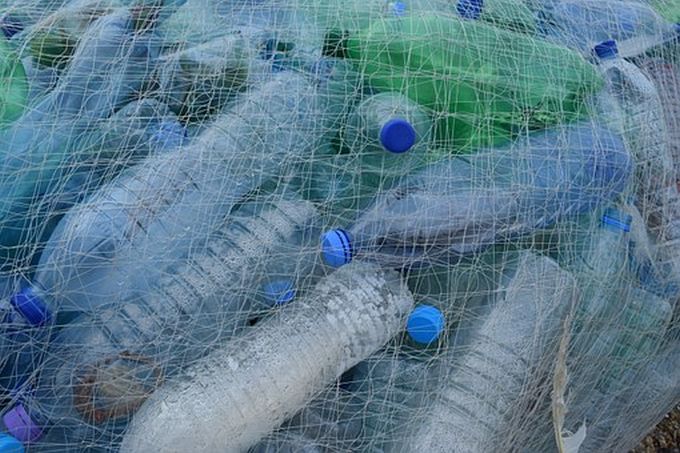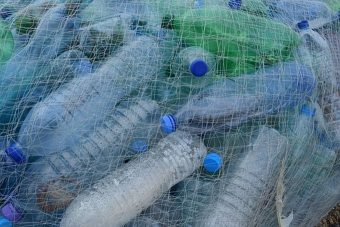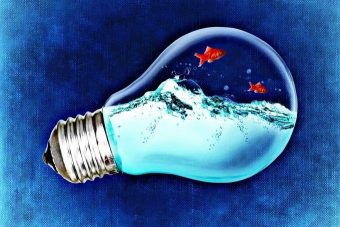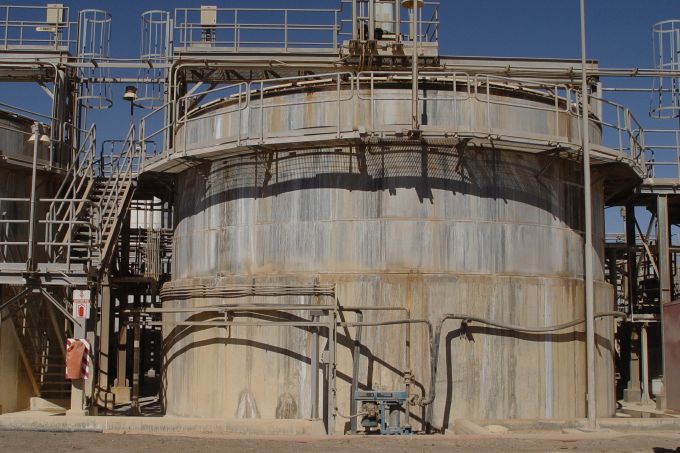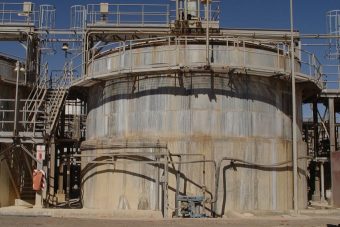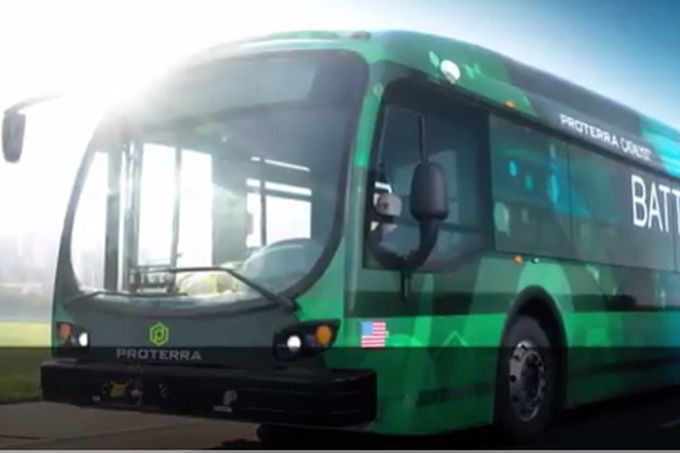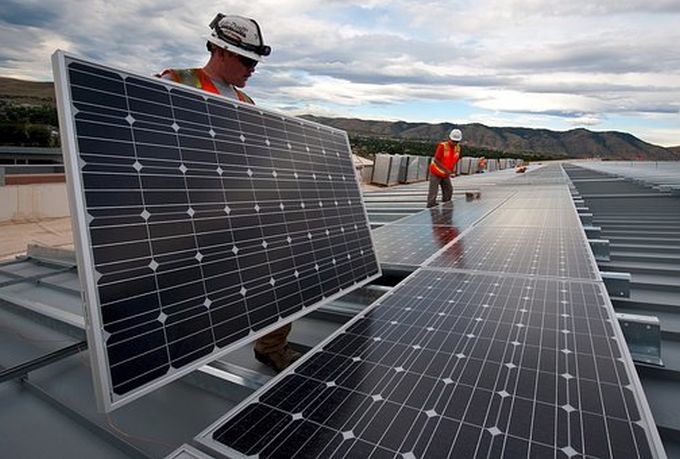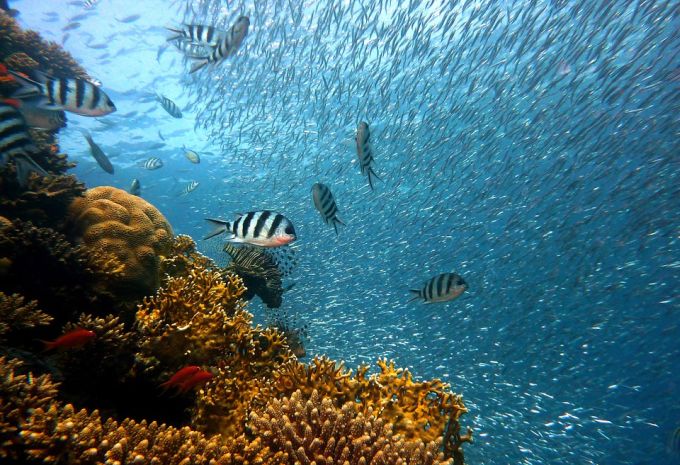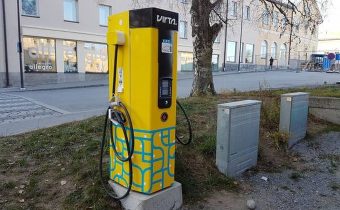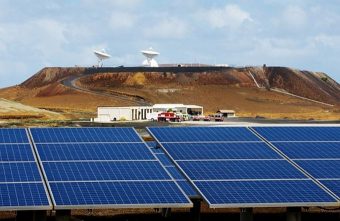
A renewable energy project in Bedfordshire described as the UK’s first solar farm to be built without government subsidy will be officially opened later today by Climate Change Minister Claire Perry.
The 10MW Clayhill solar farm and energy storage has been built by renewable energy developer Anesco and is expected to provide clean power to around 2,500 homes, while saving 4,452 tonnes of carbon a year.
The project features solar panels and five battery storage units totalling 6MW of capacity provided by Chinese clean tech giant BYD, as well as new 1500v solar inverters provided by Huawei. Anesco said construction of the project was completed in just 12 weeks.
The company’s executive chairman, Steve Shine, said the project represented “a landmark development [that] paves the way for a sustainable future, where subsidies are no longer needed or relied upon”.
“Importantly, it proves that the government’s decision to withdraw subsidies doesn’t have to signal the end of solar as a commercially viable technology,” he said.
Deployment rates across the solar industry have plummeted in recent years after the government slashed financial incentives for smaller projects under the feed-in tariff scheme and failed to schedule a clean energy contract auction for onshore wind and solar farms under the contract for difference (CfD) regime.
Industry insiders have long argued that the failure to allow solar projects to compete in a CfD auction has stopped projects that would prove more cost competitive than new fossil fuel projects being developed.
However, some experts have predicted that plummeting solar and energy storage costs mean well located projects could still be developed if they can find a way to hedge against volatile wholesale power prices.
Shine said co-locating the solar farm with storage capacity that would allow it to provide power during periods of peak demand had allowed the company to go ahead with the project without recourse to subsidy.
“Given our extensive experience with solar and storage projects, we took a fresh look at how we could finance and develop Clayhill without needing a renewables subsidy,” he explained in a statement “We sought the views of our supply chain and with them looked at every aspect of the project – its design, the technical specifications, the use of the very latest technology and the costs of the various components. By deciding to co-locate the 6MW battery storage unit and by working closely with our supply chain partners, we have been able to achieve a subsidy-free development.”
The project was welcomed by Perry, who reiterated the government’s commitment to expanding the clean energy sector.
“The cost of solar panels and batteries has fallen dramatically over the past few years, and this first subsidy-free development at Clayhill is a significant moment for clean energy in the UK,” she said in a statement “Solar panels already provide enough electricity to power 2.7 million homes with 99 per cent of that capacity installed since 2010. The government is determined to build on this success and our ambitious Clean Growth Strategy will ensure we continue to lead the world on the transition to a low carbon economy.”
The reference to a Clean Growth Strategy suggests the government may have again changed the name of its long-awaited decarbonisation plan, which was originally referred to as the Emissions Reduction Plan before being rebranded as the Clean Growth Plan.
The plan, which will set out how the government intends to meet its emissions reduction targets for the mid-2020s and early 2030s, was expected to be released in early September, but is still yet to be launched.
Renewable energy industry groups have urged the government to include new measures in the plan that would provide onshore wind and solar farms with a clear route to market and allow them to compete with other energy generating projects, including new gas-fired power plants, which enjoy price support.
Source: businessgreen.com



